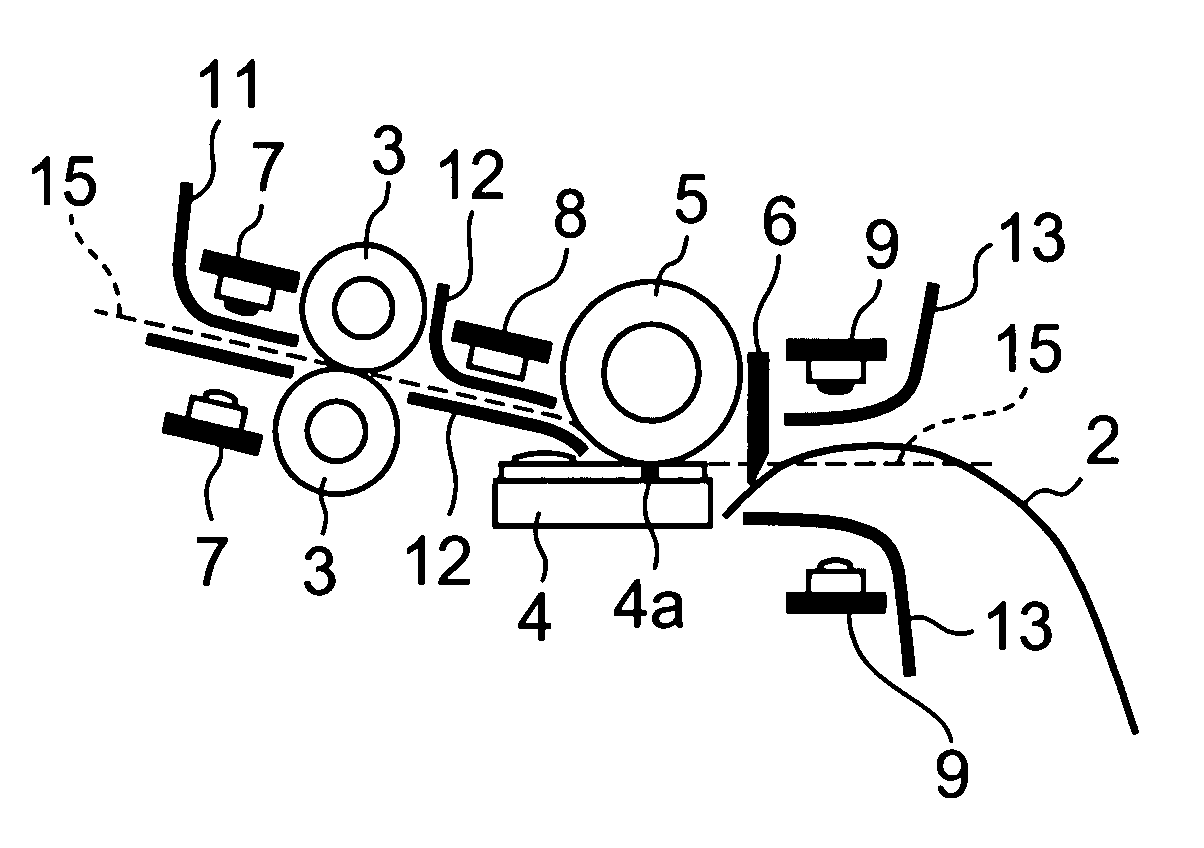Thermal Activation device, printer, thermal activation method, and method of producing a self-adhesive label
a self-adhesive label and activation device technology, applied in the direction of measuring devices, instruments, printing, etc., can solve the problems of excessive heat-sensitive adhesive sheet application, abnormal color development, difficult to set the trailing edge of heat-sensitive adhesive sheet, etc., to prevent the structure from increasing in size and complexity, prevent the adhesive force from being lowered, and prevent the effect of increasing costs
- Summary
- Abstract
- Description
- Claims
- Application Information
AI Technical Summary
Benefits of technology
Problems solved by technology
Method used
Image
Examples
Embodiment Construction
[0026]Hereinafter, embodiments of the present invention will be described with reference to the drawings.
[0027]FIG. 1 is a schematic cross-sectional diagram showing a thermal activation device 1 according to an embodiment of the present invention. The thermal activation device 1 includes: a pair of insertion rollers 3 for introducing a heat-sensitive adhesive sheet 2 (see FIG. 4), which is to be subjected to thermal activation, into the thermal activation device 1; a thermal head 4 for heating and thermally activating a heat-sensitive adhesive layer of the heat-sensitive adhesive sheet 2; a platen roller 5 for sandwiching the heat-sensitive adhesive sheet 2 between the platen roller 5 and the thermal head 4; an adhesion prevention member 6 positioned at a downstream side of the thermal head 4; a plurality of sensors 7, 8, and 9; guide members 11, 12, and 13; and a discharge port 14.
[0028]Those members will be described in the order from an upstream side in a sheet transport directio...
PUM
 Login to View More
Login to View More Abstract
Description
Claims
Application Information
 Login to View More
Login to View More - R&D
- Intellectual Property
- Life Sciences
- Materials
- Tech Scout
- Unparalleled Data Quality
- Higher Quality Content
- 60% Fewer Hallucinations
Browse by: Latest US Patents, China's latest patents, Technical Efficacy Thesaurus, Application Domain, Technology Topic, Popular Technical Reports.
© 2025 PatSnap. All rights reserved.Legal|Privacy policy|Modern Slavery Act Transparency Statement|Sitemap|About US| Contact US: help@patsnap.com



